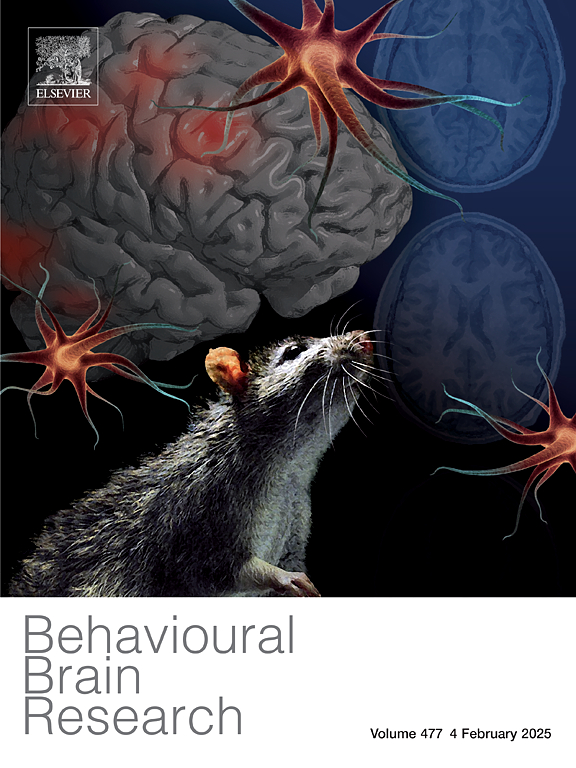产前烟草暴露对青少年皮质厚度和脑沟深度影响的兴趣区评估
IF 2.3
3区 心理学
Q2 BEHAVIORAL SCIENCES
引用次数: 0
摘要
孕产妇孕期烟草使用仍然是一个全球和国内公共卫生问题。本研究旨在利用青少年大脑认知发展(ABCD)数据集调查MTDP对儿童晚期和青少年早期大脑形态的长期影响。采用ABCD择校概率抽样方法对9-10岁儿童进行全国代表性调查。参与者及其父母或监护人接受了访谈和调查,儿童在基线和2年随访期间接受了磁共振成像(MRI)检查。分析了t1加权MRI图像上34个感兴趣区域的皮层厚度和脑沟深度的形态测量。在11448名基线儿童中,1607名儿童属于MTDP组。颅内体积(p <; 0.001)、总皮质表面积和体积(p <; 0.0001)在第1波和第2波时MTDP儿童(与对照组相比)均显著降低。海马旁回的平均皮质厚度以及峡扣带、海马旁回、枕侧回和舌回的沟深存在持续差异。几个感兴趣的区域在单个时间点表现出皮层厚度和沟深度的差异。在9-10岁和2年的随访中,MTDP与MRI上皮层厚度和脑沟深度的区域形态学差异的长期预后之间存在关联。将来自同一人群比较的NIH认知测试结合起来,结果表明长期的认知缺陷与特定的大脑区域相对应。本文章由计算机程序翻译,如有差异,请以英文原文为准。
Regions of interest assessment of prenatal exposure to tobacco on adolescent cortical thickness and sulcal depth
Maternal tobacco use during pregnancy (MTDP) remains a global and domestic public health issue. This study seeks to investigate the long-term impact of MTDP on brain morphology during late childhood and early adolescence using the Adolescent Brain Cognitive Development (ABCD) dataset. Children aged 9–10 were enrolled using the ABCD school selection probability sample method for national representation. Participants and their parents or guardians underwent interviews and surveys, and children underwent Magnetic Resonance Imaging (MRI) at baseline and 2-year follow-up. Morphometric brain measures of cortical thickness and sulcal depth across 34 regions of interest on T1-weighted MRI images were analyzed. Of 11,448 at baseline, 1607 children fell into the MTDP group. Intracranial volume (p < 0.001), total cortical surface area, and volume (p < 0.0001) were significantly lower among MTDP children (vs. control) at both waves 1 and 2. A sustained difference was found in mean cortical thickness at the parahippocampal gyrus as well as sulcal depth at the isthmus cingulate, parahippocampal, lateral occipital, and lingual gyri. Several regions of interest demonstrated differences in the cortical thickness and sulcal depth at single time points. An association between MTDP and long-term outcomes of regional morphometric differences in cortical thickness and sulcal depth on MRI was found at both baseline among 9–10 years old and at 2-year follow-ups. Taken together with NIH cognitive testing from the same population comparison, the results suggest longstanding cognitive deficits corresponding to specific brain regions.
求助全文
通过发布文献求助,成功后即可免费获取论文全文。
去求助
来源期刊

Behavioural Brain Research
医学-行为科学
CiteScore
5.60
自引率
0.00%
发文量
383
审稿时长
61 days
期刊介绍:
Behavioural Brain Research is an international, interdisciplinary journal dedicated to the publication of articles in the field of behavioural neuroscience, broadly defined. Contributions from the entire range of disciplines that comprise the neurosciences, behavioural sciences or cognitive sciences are appropriate, as long as the goal is to delineate the neural mechanisms underlying behaviour. Thus, studies may range from neurophysiological, neuroanatomical, neurochemical or neuropharmacological analysis of brain-behaviour relations, including the use of molecular genetic or behavioural genetic approaches, to studies that involve the use of brain imaging techniques, to neuroethological studies. Reports of original research, of major methodological advances, or of novel conceptual approaches are all encouraged. The journal will also consider critical reviews on selected topics.
 求助内容:
求助内容: 应助结果提醒方式:
应助结果提醒方式:


